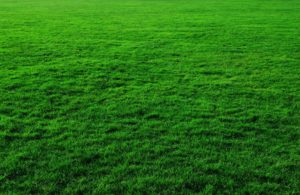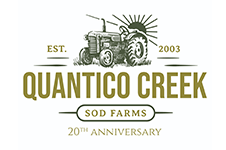
Turfgrass sod will one day turn into beautiful and thick green grass.
Turfgrass sod is a great way to transform a patchy, unkempt lawn into a beautiful landscape. It’s amazing how a small patch of seeds can eventually flourish into rich, green grass. However, sod is no different from any other plant or seedling– it still needs lots of care in order to grow properly. However, sod has slightly different maintenance than your average potted plant. Learn how to care for your turfgrass sod in this helpful guide.
Purchase Quality Fertilizer
When you install turfgrass sod to your lawn, there is likely still some old grass or plant growth underneath it. As the older grass withers, it will soon turn into healthy soil. Therefore, it is important to keep both the old grass and new grass happy simultaneously until the sod replaces the old grass. Choosing a fertilizer is easy with the help of a professional sod layer, but it also can be done yourself through soil quality testing. After the turfgrass sod grass has fully integrated itself into the soil, make sure to find a fertilizer made for the specific genus of grass, like Zoysia or Kentucky Bluegrass.
Keep an Eye on Water Levels
Turfgrass sod needs a lot of water to keep itself going, especially the first few weeks after it’s laid. This is because the sod needs plenty of water to germinate properly and integrate its roots into the ground soil. Overwatering at first is not a big deal; in fact, it can benefit the turfgrass sod. But once the sod turns to grass, overwatering can become a huge problem. Make sure to keep watch on the growth stage that the grass is in when watering. After a certain point, turfgrass sod will not need as much water as before simply due to it being all grown up.
Mow Wisely
When you immediately lay down your turfgrass sod, don’t mow the lawn for a while. Lawnmowing can seriously mess with the germination of the sod. A good rule of thumb is to check on your grass every day for a few weeks. When it gets to the point where you can pull up on the turfgrass sod, and the whole sheet no longer lifts, it is safe to start mowing the grass. It’s also important to note the species of grass since there are ideal heights for different grass types to encourage the healthiest growth.
Keep Out the Weeds
If you accidentally over-fertilized your turfgrass sod at the beginning of its growth cycle, you might be left with very dense grass. Unfortunately, this leaves room for weeds to grow. Make sure to choose a herbicide that is safe for baby grass and the type of sod you chose.
Have More Questions? Stay in Touch!
Order early and order often to ensure the best service possible. Contact us through our online page. Please find us at 27616 Little Lane, Salisbury, Maryland 21801. Our phone number is 410-726-6103, and our fax number is 410-742-6550. Speak to Jason Anderson for Turf Grass Sales. Reach him by email at jason@quanticocreeksod.com. Finally, follow us on social media on Facebook, LinkedIn, and our blog!
